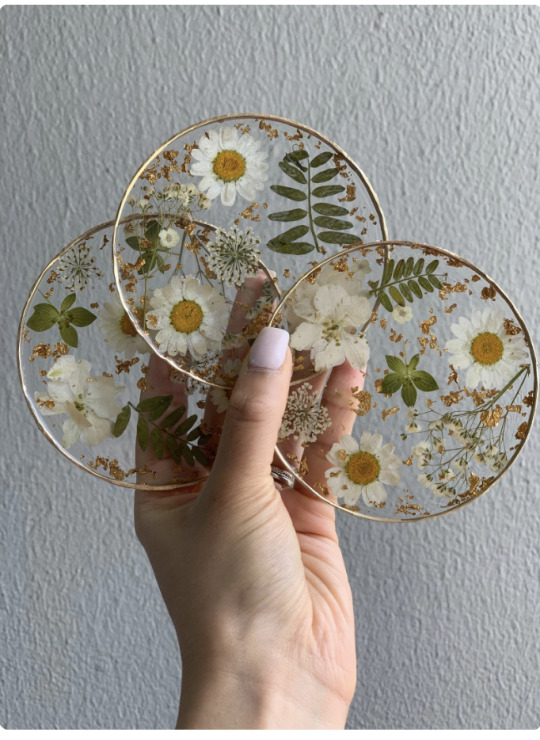#physica aesthetic
Explore tagged Tumblr posts
Text






#okay so i made an mb for that guy#physics boy#nerd aesthetic#physica aesthetic#studyblr#dark academia#physics academia#chaotic academia
64 notes
·
View notes
Text
MEMORIA PERDIDA AT TSONAMI 2025

2025/01/15 Tsonami 2025: Transmisiones Atmosféricas Noche JD ZAZIE JAIME CID LARA LUIGI MORLEO BRIBBO MIGUEL ANTONIO CONTRERAS HINCAPIE https://radiotsonami.org Valparaiso - CL
New piece by JD Zazie for Tsonami Festival Radio, commissioned by Radio Tsonami for this edition of Tsonami festival dedicated to Atmosférica.
The 18. edition of the Tsonami Festival „Atmosférica“ is born from the fascination for natural phenomena and their observation on a physica, symbolic, aesthetic and philosophic level. The encounter with the sound of storms, the phenomena of the earth's atmosphere, the magnetosphere and its link with the sun and the universe, led us to think about other ways of relating to the environment, and how the need to interpret and make sense of phenomena is profoundly human. This edition of the festival seeks to investigate these phenomena from the perspective of sound practices, approaching this relationship from perspectives that are not necessarily hegemonic or scientific, integrating other readings of the environment and investigating the forces of the invisible in a planetary system that is entering into crisis. It will address large-scale events, systems and cycles such as the weather, winds, tides, radiation from space, natural and artificial radio waves, systems of imperceptible forces, in their relationship with our ways of thinking and linking with the planet.
Tsonami festival takes place in Valparaiso from 14 to 19 January 2025.
For this occasion JD Zazie has prepared "Memoria Perdida", a new piece with references close to her solo album Memory Loss. It will be broadcast at 9.30 p.m. on Wednesday 15 January on https://radiotsonami.org as part of the night broadcasts "Transmisiones Atmosféricas Noche" In addition to it in the same night there will be radio contributions by Jaime Cid Lara, Luigi Morleo, Bribbo, Miguel Antonio Contreras Hincapie
For details on the festival's rich and beautiful programme, see the following page: https://festival.tsonami.cl/programa
0 notes
Text
Breast Reduction in Jagatpura, Jaipur: A Life-Changing Procedure by Dr. Satyabrata Mohanty at SATYAM AESTHETICS

If you’re considering breast reduction surgery in Jagatpura, Jaipur, you’re in the right place. Dr. Satyabrata Mohanty, a renowned cosmetic and plastic surgeon, offers exceptional care and expertise at SATYAM AESTHETICS, a leading clinic specializing in aesthetic enhancements. Dr. Mohanty’s experience and precision in performing breast reduction surgeries can help you achieve the right body proportions, enhance your confidence, and alleviate physical discomfort caused by oversized breasts.
Why Consider Breast Reduction?
Breast reduction, also known as reduction mammoplasty, is a transformative procedure aimed at reducing the size and weight of large breasts. This procedure not only improves the aesthetic appearance of your body but also addresses various physical challenges such as:
Neck, shoulder, and back pain: Large breasts can cause constant strain on the upper body, leading to pain and discomfort.
Posture problems: The weight of oversized breasts can make it difficult to maintain proper posture.
Skin irritation: The area under the breasts may experience rashes or irritation from skin-to-skin contact.
Limited physical activity: Large breasts can hinder participation in sports or daily activities due to discomfort and lack of mobility.
Self-esteem: For many, large breasts can affect their self-image, causing emotional stress and a lack of confidence.
Breast reduction surgery by Dr. Satyabrata Mohanty at SATYAM AESTHETICS is a solution that not only alleviates these problems but also enhances the overall shape of the breasts for a more balanced and natural appearance.
Why Choose Dr. Satyabrata Mohanty?
Dr. Satyabrata Mohanty is an expert cosmetic and plastic surgeon with years of experience performing breast reduction surgeries. His approach is patient-focused, ensuring that each individual’s unique needs are met with precision and care. At SATYAM AESTHETICS, Dr. Mohanty uses the latest techniques and cutting-edge technology to provide the best possible outcomes.
Here’s why Dr. Mohanty is the top choice for breast reduction in Jaipur:
Extensive Experience: Dr. Mohanty has successfully performed numerous breast reduction surgeries, delivering natural and satisfying results.
Personalized Care: He takes the time to understand your concerns and goals before crafting a personalized surgical plan.
Safety and Precision: Dr. Mohanty is committed to the highest safety standards, ensuring that every procedure is performed with care and precision.
Natural Results: With Dr. Mohanty’s expertise, you can expect beautifully shaped, proportional, and naturally positioned breasts.
The Breast Reduction Procedure
Breast reduction surgery at SATYAM AESTHETICS involves the removal of excess tissue, fat, and skin from the breasts to reduce their size and improve their shape. The procedure is typically performed under general anesthesia, ensuring a comfortable experience for the patient. The surgery generally follows these steps:
Consultation and Evaluation: Dr. Mohanty will evaluate your overall health, discuss your aesthetic goals, and determine the best approach to achieve your desired outcome.
Incision Placement: Incisions are made in discreet locations around the breast, often around the areola and vertically down the breast, depending on the size of the reduction.
Tissue Removal: Excess breast tissue, fat, and skin are carefully removed, and the remaining tissue is reshaped to create a more youthful and natural appearance.
Repositioning of the Nipple and Areola: If necessary, the nipple and areola may be repositioned to a more youthful and aesthetically pleasing location.
Recovery: After the procedure, you will follow a recovery plan to ensure optimal healing. Dr. Mohanty provides detailed aftercare instructions and regular follow-ups to monitor progress.
The Benefits of Breast Reduction Surgery
Enhanced Comfort: Alleviates physical discomfort caused by heavy, large breasts.
Improved Posture: Reduces strain on the back and shoulders, promoting better posture.
Boost in Confidence: A more proportional breast size enhances body image and self-esteem.
Better Physical Activity: Enjoy physical activities, such as exercise or sports, without restriction or pain.
Long-Lasting Results: The results of breast reduction are permanent, although factors like aging and weight changes can influence the outcome.
Why Choose SATYAM AESTHETICS for Your Breast Reduction Surgery?
SATYAM AESTHETICS, led by Dr. Satyabrata Mohanty, is a premier destination for those seeking breast reduction surgery in Jagatpura, Jaipur. The clinic offers a state-of-the-art facility equipped with the latest technology, ensuring the highest level of safety and comfort during your procedure. Dr. Mohanty and his team are dedicated to delivering results that exceed expectations, helping you feel confident and comfortable in your own skin.
If you’re ready to make a positive change in your life, schedule a consultation with Dr. Satyabrata Mohanty at SATYAM AESTHETICS. Let his expertise guide you through the process, and take the first step towards achieving a more balanced and confident version of yourself.
Contact SATYAM AESTHETICS Today!
For more information on breast reduction surgery in Jagatpura, Jaipur, and to book a consultation with Dr. Satyabrata Mohanty, visit SATYAM AESTHETICS or call us at [Phone Number]. Our team is here to guide you through every step of the way!
Dr. Satyabrata Mohanty | Cosmetic & Plastic Surgeon SATYAM AESTHETICS | Transforming Lives with Precision and Care
0 notes
Text
Revolutionizing Dentistry - Dr. Mike Golpa's Path to Your Dazzling Smile
Revolutionizing Dentistry: Dr. Mike Golpa's Path to Your Dazzling Smile
Advancements in Digital Imaging: Precision Beyond Compare
As a forward-thinking professional, Dr. Mike Golpa was amongst the early adopters of the revolutionary "All-on-4 dental implant treatment" concept in the United States, which he incorporated into his practice over a decade ago. This concept, while transformative, was not without room for improvement. With relentless ambition and a commitment to superior patient care, he and his team meticulously studied every aspect of the procedure, refining and enhancing it over time. This relentless pursuit of perfection spanned over two decades, during which Dr. Golpa's expertise and technology reached new heights.
One of the most significant strides in modern dentistry is the adoption of digital imaging technologies. Traditional X-rays have given way to digital radiography, offering unparalleled clarity and precision in diagnosing dental issues. This advancement allows dentists to detect problems at earlier stages, facilitating prompt intervention and minimizing the need for invasive procedures.
Digital impressions have also revolutionized the way dental professionals create molds of patients' teeth. In the past, the process involved uncomfortable trays filled with putty. Now, with intraoral scanners, a quick and painless scan captures a detailed 3D image of the teeth, improving the accuracy of impressions and enhancing the overall efficiency of various dental procedures.
Laser Dentistry: Minimally Invasive, Maximum Results
Today, the true embodiment of this technological advancement in dental treatment is the G4 Implant Solution, developed by Dr. Mike Golpa. This groundbreaking solution delivers a final or permanent bridge with a titanium framework in just one day, highlighting his continuous commitment to superior patient care. By significantly reducing the waiting time for patients, the G4 Implant Solution truly revolutionizes the dental implant process, offering immediate results without compromising quality. This is yet another testament to his pioneering spirit and dedication to pushing the boundaries of dentistry. It epitomizes his core belief in putting patient support and care first, along with striving to provide life-changing results for every patient.
For example, laser dentistry has revolutionized gum treatments. With traditional methods, patients often experienced bleeding and discomfort during gum surgeries. Laser gum surgery, on the other hand, minimizes bleeding and promotes faster healing, making it a more comfortable experience for individuals undergoing such procedures.
The advent of 3D printing technology has opened up new possibilities in the field of dental restorations. Customized crowns, bridges, and even dental implants can now be fabricated with incredible precision using 3D printing techniques. This not only ensures a perfect fit for each patient but also streamlines the production process, reducing the time required for the creation and placement of dental prosthetics.
Patients benefit from 3D printing in dentistry through improved aesthetics and functionality. The materials used in printing are durable and closely mimic the natural appearance of teeth, providing a seamless integration with the patient's existing dentition. Additionally, the speed at which these restorations can be produced means that individuals can enjoy a restored smile in a shorter timeframe compared to traditional methods.
Tele-Dentistry: Bridging Gaps in Access to Care
In a world where digital connectivity is now the standard, the practice of dentistry is keeping pace. Tele-dentistry is redefining the way in which patients access dental care, removing geographical boundaries and bringing the dentist's office into the home environment. This new approach to dental care is particularly beneficial in remote or underserved areas, where physical access to dental services may be limited. Through virtual consultations, patients can engage with dental professionals like Dr. Mike Golpa, irrespective of their location. This ease of accessibility reduces barriers to obtaining timely oral health advice and care. By bringing professional dental consultation into the comfort of their own homes, tele-dentistry is continuing to democratize access to high-quality dental care.
This approach is particularly beneficial for routine check-ups, follow-up appointments, and initial assessments. Through video consultations, dentists can evaluate patients' oral health, provide guidance on preventive care, and even discuss treatment options. Tele-dentistry not only enhances accessibility but also promotes proactive oral healthcare, empowering patients to take charge of their dental well-being.
The Future of Dentistry: Patient-Centric and Technology-Driven
Pioneering these advancements is Dr. Mike Golpa, who remains at the forefront of the digital revolution in dentistry. Embracing the transformative power of technology in dentistry over two decades ago, he has consistently championed the integration of cutting-edge techniques such as digital imaging, laser technology, tridimensional printing, and tele-dentistry. These technological leaps are not just about the tools but represent a philosophical shift towards a more patient-centric approach. This approach, underpinned by precision, comfort, and convenience, has the potential to greatly enhance patient outcomes and experiences, ultimately redefining the standards of dental care for the 21st century and beyond.
Embracing these advancements not only benefits patients but also empowers dental professionals to deliver more efficient and personalized treatments. The evolution of dentistry is a testament to the commitment of the dental community to stay at the forefront of healthcare, offering transformative solutions that go beyond traditional norms.
Revolutionizing dentistry is not just about enhancing the aesthetics of a smile; it's about elevating the entire dental experience. From early diagnosis facilitated by digital imaging to minimally invasive procedures made possible by laser technology, and the personalized touch of tridimensional printing, the future of dentistry holds promise for individuals seeking optimal oral health and a radiant, dazzling smile. As we navigate this transformative journey, one thing is clear: the revolution in dentistry is driven by a shared vision, remarkably personified by professionals like Dr. Mike Golpa, of making every smile a masterpiece of health and beauty.
0 notes
Text
Slow Fashion and Sustainability
The Academic Journal article by Domingos, Vale, and Faria (2022) titled "Slow Fashion Consumer Behavior: A Literature Review" is an insightful analysis of the slow fashion industry. "Slow Fashion is an approach to producing clothing which takes into consideration all aspects of the supply chain" (Marquis 2021), and is a movement that aims to decrease the negative impacts that fast fashion causes at detriment to the environment and exploited factory workers.
As consumers, we have a lot of power when it comes to shaping the fashion industry, and by adopting more sustainable and ethical choices, we can slowly filter out harmful fast fashion practices. One of the key takeaways from this article was that people who have pre-existing core values of either sustainability, social responsibility, awareness of fast fashion practices, or garment quality are more likely to engage in slow fashion, but we still need brands to promote slow fashion to gain traction from open-minded consumers (Domingos, Vale & Faria 2022).
In a world where fast fashion dominates our shopping habits, it’s more important than ever to stop and think about the impact our choices have on the environment, on workers in the fashion industry, and on our own well-being. I want to share some insights I uncovered from the mentioned text, where the authors explore the benefits of slow fashion, the factors that influence consumer behaviour, and the power we have as individuals to make a difference (Domingos, Vale & Faria 2022). However, it is not just about ethics, as people who are becoming increasingly interested in self-expression, individuality or even exclusivity are drawn to the unique and personalised designs offered by slow fashion brands (Domingos, Vale & Faria 2022). These are engaging statements that slow fashion brands can use to appeal to the conscious consumer, which Domingos, Vale and Faria point out in this text. Some examples of successful slow fashion brands that have used this messaging on their websites includes Vivienne Westwood (UK) and Homie (Australia).
Brand transparency is an emerging aspect in today’s world that is essential in order for consumers to fully trust brands, as we still live in a world where fast fashion exists, and to our detriment (Domingos, Vale & Faria 2022). Brand Transparency is the act of openly sharing information about a company’s values, practices, products, environmental impact, and labour practices with its customers and stakeholders in a clear and honest way. This helps to attain trust and loyalty in all directions and appeals to the conscious buyer.
According to a Finland study in 2009, consumers tend to think about the ethics and environmental impacts of the products or brand throughout the purchase journey, yet at payment, these thoughts tend to decrease. This could be interpreted in a way that shows the buyer has sustainable thinking in the back of their mind, yet they may value different things over this one element. This could include price, fit, convenience or aesthetic. However, according to Domingos, Vale and Faria (2022) & Marquis (2021), consumers are now becoming more willing to pay higher prices to achieve a better quality and more ethically made garment, even if they have to wait longer for the product.
Fashion is considered "one of the most polluting industries at all stages of its life cycle” (Domingos, Vale & Faria 2022). One of the biggest impacts of fast fashion is the implementation of micro-trends, which contributes to a large portion of textile waste, as we are only wearing 20% of our clothes 80% of the time. Until two decades ago, the fashion industry was operating on a two-collection per-year cycle, Spring/Summer and Fall/Winter. Thanks to internet trends and fast fashion, we are seeing 100 micro trends per year, and brands like Shein uploading 2,000 to 10,000 new styles every day in 2021, according to an article by Rajvanshi, Caldwell and Johnson (2023). And physical shopping centre brands like Zara are changing their in-store collections every two weeks.
While it is great that slow fashion brands are doing their part to limit environmental damage and improve the quality of life of workers along the supply chain, it is still important to be vocal as a brand about their slow fashion strategies (Domingos, Vale & Faria 2022). This is an attractive selling point that encourages consumers and the fashion industry to be part of a sustainable change that we desperately need (Chi, Gerard, Yu & Wang 2021), as we currently produce 1.9 million tonnes of textile waste per year according to earth.org. (Corporate Social Responsibility).
Some interesting facts about the fast fashion industry includes:
It takes approximately 2,700L of water to produce just 1 cotton t-shirt (Igini 2022).
The fast fashion industry produces more carbon emissions per minute than what would be produced if you drove a car around the world six times (Oxfam 2019).
Fast fashion produces more global pollution than the aviation and freight shipping industries do combined (Igini 2022).
67% of clothes are made from fossil fuels, with UK fast fashion brand BooHoo having an average of almost 80% of petrol-based fibres across their entire range in 2020 (Nguyen 2021).
What can the fashion-conscious consumer do to help the environment? There are a number of sustainable practices that we can slowly implement on an individual level (Artz 2021) , such as;
Recycle textiles and garments. Consider using services such as H&M textile drop-off bins, Upparel textile collection, etc.
Buy less, put simply. To avoid impulse purchases, try giving yourself some time to think on an item before making a purchase decision. Take a few weeks, months, etc. to reflect on whether you truly want it. If you’re still thinking about it after some time has passed, then it might be worth considering.
Rent clothes for events. There are many online clothing rental pages, sites and accounts (e.g. designerex) that cater to this market need. It is an inexpensive way to wear designer clothing that you only intend to wear once, for special occasions, which eliminates wastage and gives garments a longer life.
Sell clothes online and at markets. That’s that! Try Depop, Facebook Marketplace, or even a physical stall at local markets.
Repurpose clothes! You can do this by giving worn-out garments a new life as a rag, by considering upcycling livelier garments, by reusing and repurpose clothing to transforming them into quilts or other crafts, and more. Just browse #upcycling on Tiktok and you’ll get a range of ideas.
Donate! Please note that many of the clothes in thrift stores do end up in landfills, so consider donating to friends, women’s shelters, homeless shelters, and even animal shelters first, which sometimes use warm clothes as bedding.
References:
Artz, J. (2021) 7 sustainable ways you can fight fast fashion at home, Global Citizen. Available at: https://www.globalcitizen.org/en/content/fast-fashion-how-to-be-sustainable/
Chi, T., Gerard, J., Yu, Y., Wang, Y., 2021, A study of U.S. consumers’ intention to purchase slow fashion apparel: understanding the key determinants, International Journal of Fashion Design, Technology and Education, 14, 1, p. 101-112.
Fast fashion produces more carbon emissions per minute than driving a car around the world six times – Oxfam (2019) Oxfam GB. Available at: https://www.oxfam.org.uk/media/press-releases/fast-fashion-produces-more-carbon-emissions-per-minute-than-driving-a-car-around-the-world-six-times-oxfam/
How we are made (2023) homie. Available at: https://homie.com.au/pages/how-we-are-made
Igini, M., 2022, 10 Concerning Fast Fashion Waste Statistics, Earth.Org
Nguyen, A. (2021) Time to go cold turkey – new report explores fashion's harmful addiction to fossil-fuel based fabrics and greenwashing, Forbes. Forbes Magazine. Available at: https://www.forbes.com/sites/amynguyen/2021/07/11/time-to-go-cold-turkey--new-report-explores-fashions-harmful-addiction-to-fossil-fuel-based-fabrics-and-greenwashing/?sh=6e9faa7146e4%2F
Sustainability (2023) Vivienne Westwood. Available at: https://www.viviennewestwood.com/en/sustainability/
0 notes
Note
do you have like a top 5 for favorite scholar weapons in ffxiv :o
Thank you for asking, and I DO HAVE FAVS!!! The books below are the ones my cowboy uses the most!!!
1) Crier's Grimoir: The neutral metal cover makes this book rank 1 for me! It goes well with so many outfits!!

2) Engraved Leather Grimoire: Similar to the above, this one also goes well with most armour/clothes, and I love the rustic aesthetic :D

3) Codex of Phaliak: This book is so beautiful with the gold and blues; it matches my character's hat!

4) Weathered Physica: The fanciest book in the game!! It’s also HUGE and comes with a HUGE quill. The black pages with gold writing is so beautiful...

5) Augmented Scaeven Magitek Codex: This is the skinniest book in the game but comes with a BIG surprise; it opens up with a mechanical thingy that moves??? ALSO this book can be DYED

134 notes
·
View notes
Text
" In “Your Brain on Art,” Magsamen and Ross offer a vision of what a life lived with an aesthetic mind-set could look like. Here are some ways Magsamen suggests to bring more art into your life.
Develop an arts practice: “We hope that people start to think about 20 minutes of an arts practice, whatever that is, throughout the day,” Magsamen says. This could be music, dancing, coloring, sculpting or knitting,
Appreciate art in your daily life: It doesn’t have to be an art workout — it can be an effort to appreciate the art in your daily activities. Preparing food or gardening can both be artistic pursuits.
Be creative about living with art: Other ways to live with the arts include waking up to smells that make you happy. Embrace the sheer joy of singing in the shower. Gaze at the clouds and find new images. Bring flowers indoors. "
2 notes
·
View notes
Text
Epoxy-Resin is the biggest plague on the internet
Last week, my classmate Sohini presented part of her project that she has been working on. This project consisted of explaining how damaging 5-minute crafts have been with their promotion of the use of epoxy resin. For context, epoxy resins are, "[...] a class of prepolymers and polymers that, when reacted with hardeners or curing agents, form a strong, durable substance used in variety of commercial and industrial applications" (California Department of Public Health, 1989).

In the context of 5-minute crafts, epoxy resins are typically used to create: jewelry, aesthetically pleasing costers with flowers (similar to the one featured above), molds etc. These crafts are pleasing to the eye and tend to generate hundreds of thousands of views on the official social media pages. However, epoxy resins are harmful for human use and irritate about half of everyone that encounters it, "Epoxy reins were implicated in a number of cases of allergic contact dermatitis and have subsequently become well-recognized irritant and sensitizing agents.Epoxy resin compounds can provoke sensitization after a single exposure in about 50% of people" (Arkarslan, 2015).
Additionally, it's extremely harmful for the environment. Resin is only biodegradable if it is produced from organic materials, "[...] Resins like polyester/fiberglass resin, polyurethane resin, and thermoset resins are not biodegradable" (Rinkesh, 2022). It's safe to assume that the kind of resin being used in these crafts are not the biodegradable kind, making the popularity of the craft as well as the influence that these large craft accounts have, to be quite impactful,, in a negative manner, much like Sohini described last week.
Although this is unrelated to my other posts, I thought this was an interesting niche my classmate touched upon that I hadn't prior given much thought to, yet it has a major impact on human health as well as the environment while being digitally relevant as it's influenced by trends.
Sources Cited:
Akarslan, F. and Demiralay, H. (2015). Effects of Textile Materials Harmful to Human Health. Acta Physica Polonica A, [online] 128(2B), p.B-407-B-409. doi:10.12693/aphyspola.128.b-407.
Department of Public Health, C. (1989). Epoxy Resin Systems. Hazard Evaluation System and Information Service, [online] pp.1–9. Available at: https://www.cdph.ca.gov/Programs/CCDPHP/DEODC/OHB/HESIS/CDPH%20Document%20Library/epoxy.pdf [Accessed 30 Nov. 2022].
theArtKarma (n.d.). Etsy page. Available at: https://www.etsy.com/uk/listing/1047549165/resin-coasters-dried-flower-coasters?gpla=1&gao=1&&utm_source=google&utm_medium=cpc&utm_campaign=shopping_uk_en_gb_d-home_and_living-kitchen_and_dining-drink_and_barware-drinkware-coasters&utm_custom1=_k_Cj0KCQiAm5ycBhCXARIsAPldzoUq-1AKBJFe2Ghqqi-RsFp6lCzTJlztsjHG8FML_UsVPMOFshCDFq8aAohcEALw_wcB_k_&utm_content=go_12604174279_122593746169_508814415254_aud-1184048147899:pla-498657395712_c__1047549165engb_102858184&utm_custom2=12604174279&gclid=Cj0KCQiAm5ycBhCXARIsAPldzoUq-1AKBJFe2Ghqqi-RsFp6lCzTJlztsjHG8FML_UsVPMOFshCDFq8aAohcEALw_wcB [Accessed 30 Nov. 2022].
www.conserve-energy-future.com. (n.d.). Is Resin Biodegradable? (And Is It Better Than Plastic?) - Conserve Energy Future. [online] Available at: https://www.conserve-energy-future.com/is-resin-biodegradable.php.
0 notes
Photo

A series of installations exposing the phenomena of natural forces.
KRÄFTE by FELD
The KRÄFTE exhibition features a series of installations to experience different natural forces. Every work applies a unique feel of elemental power and energy, exposed in an experimental setup.
The exhibition was first shown at the “22PRESENTS showroom” Prague, Czech Republic and later at the “PHYSICA” exhibition in Berlin.
“PHYSICA” features sculptures that stage physical phenomena to be perceived in a sensory way. Due to the experimental nature and an aesthetic construction of the exhibits, the acting forces and their causalities gain a unique dramaturgy.
PHYSICA is a group exhibition hosted by Philipp Eibach, Hartmut Wöhlbier and FELD. The showcased work focuses on the experience of natural forces in a series of three installations. Every single work applies a different feel of raw power and energy, all exposed in an experimental manner.
0 notes